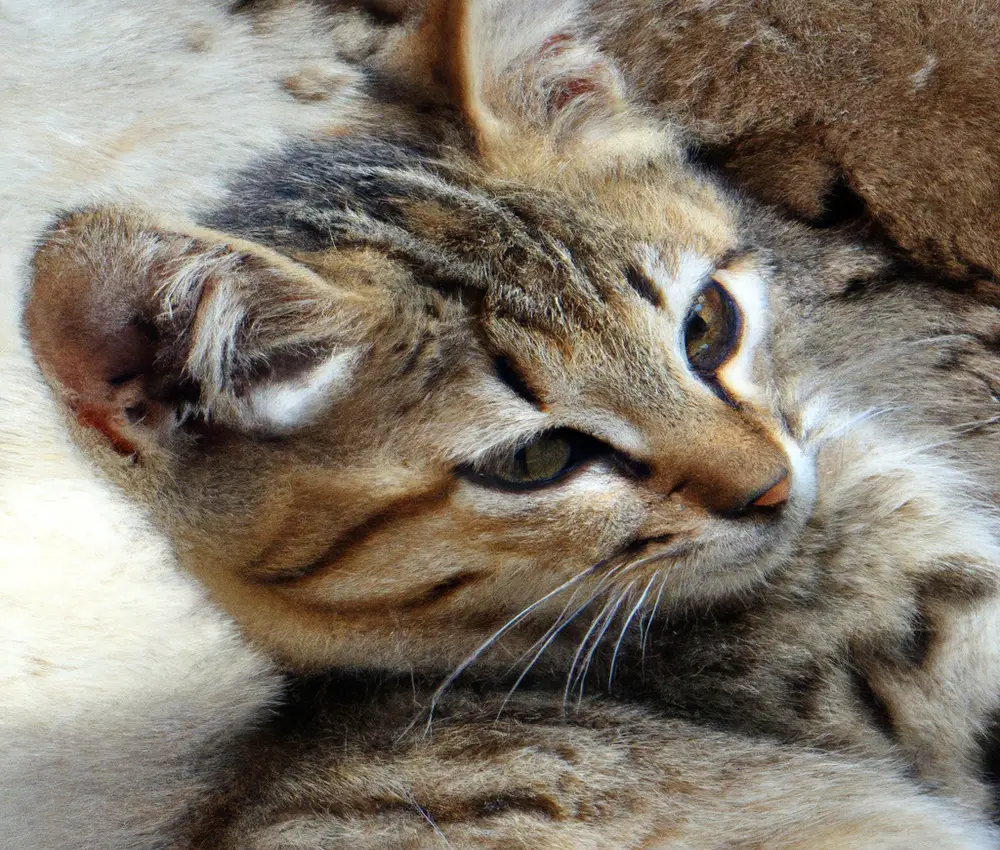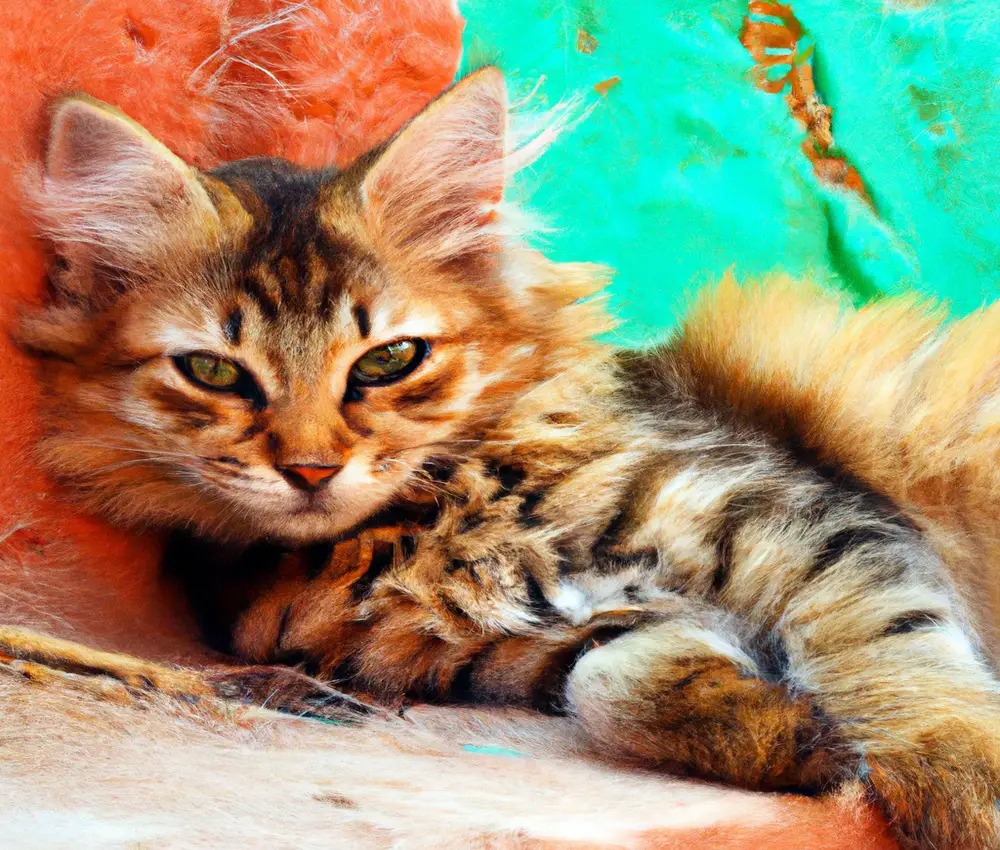What Happens To Cats That Don’t Get Adopted?
Key Takeaways:
- Cats that don’t get adopted may face overcrowding and increased stress in shelters.
- Lack of adoption can lead to longer stays in shelters, potentially decreasing their overall well-being.
- Unadopted cats may have a higher risk of euthanasia due to limited space and resources.
- Providing adoption opportunities and resources can greatly improve the lives of cats in shelters.
Are you curious to know what happens to cats that don’t get adopted? Have you ever wondered about the fate of these furry felines who are left without a forever home?
Well, you’re in the right place because today I’m going to shed some light on this heart-wrenching issue.
As an avid animal lover and someone who has spent countless hours volunteering at animal shelters, I’ve witnessed firsthand the struggles that unadopted cats face. From overpopulation challenges to the controversial topic of euthanasia, the journey of these cats is both heartbreaking and eye-opening.
But fear not! In this article, we’ll also explore alternatives for unadopted cats and how you can make a difference in their lives.
So, let’s dive in and discover the world of cat adoption together!
| Scenario | Outcome |
|---|---|
| Shelter Stay | Extended situations |
| Foster Care | Potential temporary care |
| Transfer to another shelter | Opportunity for adoption elsewhere |
| Release to community | Becoming a community cat |
| Euthanasia | Humanely euthanized under certain circumstances |
The Importance of Cat Adoption
Adopting cats is crucial for their well-being and ensures they have a loving home.
Why Cats Should Be Adopted
Cats should be adopted because they deserve a loving home.
Adopting a cat brings joy and companionship to your life.
Cats make great companions, provide stress relief, and help create a warm and welcoming home.
Additionally, adopting a cat from a shelter or rescue organization helps save a life and reduces the number of stray and homeless cats.
So, consider adopting a cat and give them the love and care they deserve.
The Challenges of Cat Overpopulation
Cat overpopulation poses significant challenges for both cats and the community.
Here are a few key challenges:
- Lack of resources: Overpopulation puts a strain on already limited resources, such as food, shelter, and veterinary services, leading to poor living conditions for cats.
- Health risks: Overcrowding and lack of proper care can increase the risk of diseases spreading among cats, including respiratory infections, parasites, and feline immunodeficiency virus (FIV.
- Strain on shelters: Overpopulated cat populations overwhelm animal shelters, making it difficult to provide proper care and find homes for all the cats in need.
- Stray and feral cat populations: Uncontrolled breeding leads to a rise in stray and feral cat populations, resulting in ecological disruption and potential conflicts with humans.
Addressing cat overpopulation requires a multi-faceted approach, including promoting spaying/neutering, responsible pet ownership, community education, and supporting local animal welfare organizations.
Together, we can help mitigate the challenges of cat overpopulation and create a better future for cats.

The Benefits of Cat Adoption
Adopting a cat brings numerous benefits to both the cat and the adopter.
- Companionship: Cats provide love, comfort, and companionship. They can be a source of emotional support and help reduce stress and anxiety.
- Health benefits: Interacting with cats has been shown to lower blood pressure and reduce the risk of heart disease. Additionally, the presence of a cat may boost the immune system and decrease the likelihood of allergies in children.
- Socialization: Owning a cat can improve social skills and encourage interactions with others. Cats can also be a great conversation starter and help you connect with fellow cat lovers in your community.
- Responsibility: Caring for a pet teaches responsibility and empathy. It helps develop a routine, promotes self-discipline, and can improve self-esteem.
- Saving a life: By adopting a cat, you give them a second chance at a loving home. You become their hero and save them from a potential life in a shelter or worse.
Remember, when you adopt a cat, you gain a loving companion that will bring joy and happiness to your life.
The Fate of Cats That Don’t Get Adopted
When cats don’t get adopted, they often end up in animal shelters facing various outcomes.
Life in Animal Shelters
Life in animal shelters can be challenging for the animals and the staff.
Shelters provide temporary homes to abandoned or stray animals while they wait to be adopted.
Being in a shelter means a structured routine with feeding, exercise, and socialization.
Animals receive regular medical care and vaccinations.
Staff members work tirelessly to provide love and care to the animals.
Shelters strive to find permanent homes, but unfortunately, some animals may not get adopted.
However, shelters never give up hope and continue to provide a safe and caring environment for as long as it takes.

Euthanasia and Its Controversy
Euthanasia is a subject that sparks intense debate and controversy. It involves the intentional ending of a cat’s life to relieve suffering or decrease the population.
Some argue it is a compassionate option when other alternatives fail, while others advocate for better adoption programs and spaying/neutering to prevent overpopulation.
The controversy lies in different ethical beliefs and views on animal rights. Understanding these opposing perspectives can help shed light on this complex and sensitive issue.
The Lack of Space and Resources
The lack of space and resources is a critical issue when it comes to cats that don’t get adopted. Shelters and rescue organizations often have limited room to accommodate all the cats in need of a home.
This shortage of space means that some cats may have to be turned away or, in unfortunate cases, euthanized if they can’t find a suitable placement.
Additionally, limited resources such as funding, volunteers, and supplies can further strain the ability to care for and support these cats.

Alternatives for Unadopted Cats
If a cat doesn’t get adopted, there are a few alternatives available including foster care programs, trap-neuter-return programs, and no-kill shelters and sanctuaries.
Foster Care Programs
Foster care programs are an essential part of helping cats who haven’t been adopted yet.
These programs provide temporary homes for unadopted cats, providing them with care, love, and attention until they find their forever homes.
Foster caregivers play a crucial role in socializing and caring for these cats, which increases their chances of getting adopted.
Foster care programs also help alleviate overcrowding in animal shelters, allowing them to rescue more cats in need.
By participating in or supporting foster care programs, we can make a significant impact on the lives of these unadopted cats.
Trap-Neuter-Return (TNR) Programs
Trap-Neuter-Return (TNR) programs are an effective way to manage the population of unadopted cats.
Here’s how it works:
- Cats are trapped humanely using specially designed traps.
- They are then taken to a veterinary clinic to be neutered or spayed.
- After surgery, the cats recover and are then returned to their original location.
- TNR programs also include vaccinating the cats against diseases.
- This approach helps control the cat population without resorting to euthanasia.
- TNR programs have been successful in many communities, reducing the number of stray cats over time.
- It’s a humane and sustainable solution for managing unadopted cats.
No-Kill Shelters and Sanctuaries
No-Kill Shelters and Sanctuaries provide a safe haven for cats that haven’t been adopted. These organizations are committed to saving and providing long-term care for animals.
No-Kill Shelters focus on finding homes for cats, while Sanctuaries offer lifelong care for cats that may have special needs or are unlikely to be adopted.
They ensure that these cats receive love, proper medical attention, and a comfortable environment for the rest of their lives. These organizations are an essential part of ensuring the well-being of unadopted cats.
How to Help Unadopted Cats
If you want to help unadopted cats, you can spread awareness, volunteer at shelters, or donate to cat welfare organizations.
Spreading Awareness
Spreading awareness about the issue of unadopted cats is vital for their well-being and finding them loving homes. One way to raise awareness is through social media platforms, where you can share posts about the challenges faced by unadopted cats and the benefits of adopting them.
Engaging with local animal shelters and rescue organizations can also help.
You can offer to host or participate in events, such as adoption fairs or fundraisers, to educate the community about the importance of adopting these cats. Additionally, volunteering your time or donating resources to support these organizations can make a difference.
Every effort counts in raising awareness and giving unadopted cats a chance at a better life.
Volunteering at Shelters
Volunteering at shelters is a fantastic way to help cats that haven’t been adopted.
You can make a real difference in their lives.
Here are a few ways you can get involved:
- Spend time with the cats: Many shelters need volunteers to spend time interacting with the cats, providing them with attention and companionship. This helps to socialize the cats and makes them more adoptable.
- Help with cleaning and maintenance: Shelters always need help with cleaning and maintenance tasks. This could include scooping litter boxes, cleaning cages, and tidying up the facilities. It may not be glamorous work, but it is crucial for the cats’ well-being.
- Assist with fundraising efforts: Shelters often rely on fundraising to cover their expenses. You can volunteer to help organize and run fundraising events, or even start your own fundraising campaign to support the shelter.
- Spread the word: Use your voice to advocate for the unadopted cats. Share their stories on social media, talk to friends and family about the importance of adoption, and encourage others to consider volunteering at shelters as well.
Remember, every little bit helps, and by volunteering your time and effort, you can make a significant impact in the lives of unadopted cats.
Donating to Cat Welfare Organizations
If you’re looking to support cat welfare organizations, donating is a great way to make a difference. Here are a few options:
- Financial contributions are always welcome. Check the organization’s website for information on how to donate securely online or by mail.
- In-kind donations such as cat food, litter, and toys can also help. Contact the organization to find out what specific items they need.
- Some organizations have volunteer programs, so if you have time to spare, consider offering your assistance.
- Spread the word by sharing information about the organization on social media or talking to friends and family.
Your donation, no matter how big or small, can help provide care and support for unadopted cats in need. Reach out to your chosen cat welfare organization to find out how you can make a difference today!
Frequently Asked Questions
How long can a cat stay in a shelter before euthanasia?
If a cat doesn’t get adopted from a shelter, the amount of time it can stay there before facing euthanasia can vary.
Policies differ among shelters, but some may have a limited capacity and therefore need to make space for new cats.
This means that if a cat isn’t adopted within a certain timeframe, they may be at risk of euthanasia.
It’s important to note, however, that many shelters work hard to find homes for all their animals and may have programs in place to increase their chances of adoption, like foster programs or partnerships with other shelters.
If you’re considering adopting a cat, remember that you’ll be giving them a loving home and saving a life.
What factors affect a cat’s chances of being adopted?
Several factors can influence a cat’s chances of being adopted. Here are some key considerations:
- Age: Kittens are often preferred over older cats, but seniors can still find loving homes.
- Breed: Some people have preferences for specific breeds, while others are more open to mixed breeds.
- Appearance: Cats with unique markings or attractive colors may attract more attention.
- Personality: Cats that are friendly, sociable, and good with children or other pets are often sought after.
- Health: Good health and up-to-date vaccinations increase a cat’s desirability.
- Shelter environment: Cats that appear stressed or scared in a shelter may be overlooked by potential adopters.
- Promotion: Attention-grabbing photos, detailed descriptions, and positive reviews can boost a cat’s chances of being noticed.
Remember, every cat deserves a loving home, and adopting from shelters or rescues can make a tremendous difference in their lives.
Are there any statistics on the number of unadopted cats?
Unfortunately, there is a lack of official statistics specifically focusing on the number of unadopted cats.
However, it is widely acknowledged that there is a significant number of cats that do not find homes and remain unadopted.
Animal shelters and rescue organizations play a crucial role in addressing this issue by providing care and finding homes for as many cats as possible.
While the exact numbers may not be available, the focus should be on raising awareness, promoting responsible pet ownership, and encouraging adoption to reduce the number of unadopted cats.
Final Verdict
The fate of cats that don’t get adopted is often bleak.
They face a life in overcrowded animal shelters, with limited space and resources.
Euthanasia becomes a controversial topic, as it becomes a solution for the overwhelming number of unadopted cats.
However, there are alternatives such as foster care programs, trap-neuter-return programs, and no-kill shelters and sanctuaries.
To help these cats, we can spread awareness, volunteer at shelters, and donate to cat welfare organizations.
Together, we can make a difference and give these cats a chance at a loving home.








